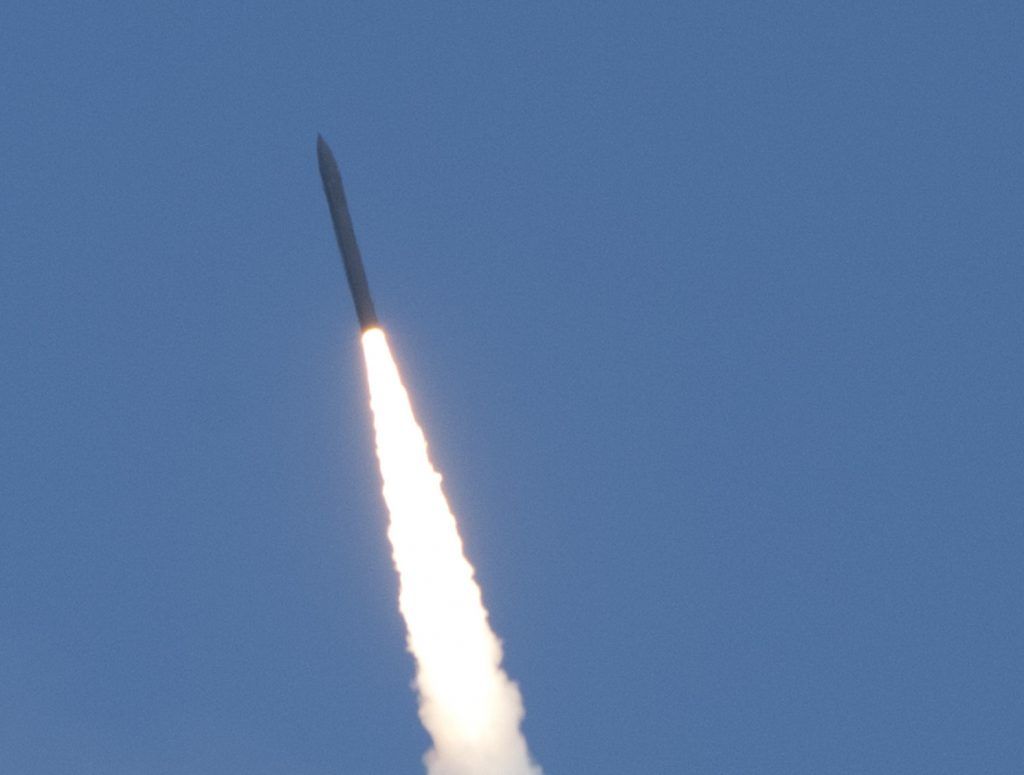North Korea fires a ballistic missile, in a further challenge to Trump
By Dan Drollette Jr | November 29, 2017
 A Missile Defense Agency flight test of a ground-based interceptor, launched from Vandenberg Air Force Base, Calif. in June 2014. Source: Missile Defense Agency
A Missile Defense Agency flight test of a ground-based interceptor, launched from Vandenberg Air Force Base, Calif. in June 2014. Source: Missile Defense Agency
In a bold act of defiance, North Korea fired a rocket that flew higher—and for a longer duration—than the last two launches of the previous iteration of this unarmed missile. (In the previous tests of July 4 and July 28, the missiles flew for 37 minutes and 47 minutes, respectively.)
To put these numbers into perspective, David Wright, a scientist at the Union of Concerned Scientists, was quoted by the New York Times as saying that the latest missile performed better than the two fired in July and exhibited a potential range of more than 8,000 miles. As Wright noted in his blog, if the reports of its range are correct, that means that the Hwasong-15 is able to reach Washington D.C., or any other part of the continental United States.
But in a twist that was noted previously in the Bulletin‘s August 11 story “North Korea’s ‘not quite’ ICBM can’t hit the lower 48 states” it appears that the North Koreans might have once again fitted the missile with a mock payload that weighed little or next-to-nothing, in an effort to increase the vehicle’s range. This makes it something a good deal less than an intercontinental weapon of mass destruction. So far.
And there are still several crucial steps remaining for the North to master before it can hit a target.
So once again “the distance traveled, while impressive, does not necessarily translate into a working intercontinental ballistic missile that could deliver a thermonuclear warhead,” notes the Times piece.
Which is not to say that the United States should not be concerned. There are several factors which make this firing different and more worrisome; for example, some North Korea-watchers theorize that North Korea fueled the missile horizontally before placing it on the launchpad—thus saving the country’s military leadership the several days involved in rolling a missile vertically onto a launchpad, filling it with liquid fuel, and then launching it. Crucially, this shortens the window of opportunity during which the rockets could be spotted by the United States or its allies before launch.
And there was another difference as well: In the words of the Times “… in response to [the] North Korean missile test, this response was more muscular, officials said, with South Korea firing from a land-based missile battery, a Navy destroyer, and an F-16 fighter jet. It was meant to show that the South had multiple ways of hitting a North Korean missile on the launchpad in a pre-emptive strike, according to South Korean military officials.”
Publication Name: New York Times
To read what we're reading, click here
Together, we make the world safer.
The Bulletin elevates expert voices above the noise. But as an independent nonprofit organization, our operations depend on the support of readers like you. Help us continue to deliver quality journalism that holds leaders accountable. Your support of our work at any level is important. In return, we promise our coverage will be understandable, influential, vigilant, solution-oriented, and fair-minded. Together we can make a difference.
Topics: Nuclear Weapons, What We’re Reading















